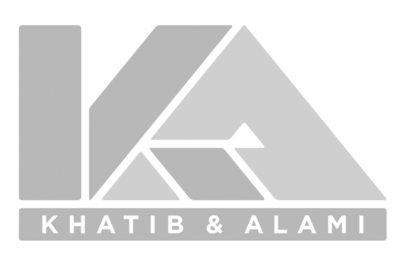DISCOVER WHY THIS
WELL AP CERTIFICATION IS WORTH IT
SIMPLEST WAY TO BECOME A WELL AP
Just 30 minutes a day for 1 week to learn all WELL AP study material.
HIGH WELL AP EXAM PASS RATE
+7000 professionals passed the WELL AP certification and LEED.
INTEGRATED PRACTICE QUESTIONS
Practice questions at the end of each lesson, demonstrating how to find the best answer.
INSTRUCTOR SUPPORT
Schedule calls and meetings with the instructor. As if you are guided with a WELL AP consultant.


SIGN UP & RECEIVE YOUR FREE WELL AP STUDY GUIDE PDF!
Our WELL AP Study Guide EBook will guide you to pass the WELL AP exam in a fast and easy process. Less than 2 weeks time!
Includes free WELL AP practice questions, the WELL AP exam embedded content, showcases the WELL AP exam format and WELL AP exam fee. It’s one of the most valuable free WELL certification exam resources we’ve ever created.
SHADI
ABOUSAMRA
SUSTAINABILITY CONSULTANT, UNIVERSITY PROFESSOR, LEED AND WELL AP TRAINER. TO DATE SHADI HAS TRAINED MORE THAN 7,000 PROFESSIONALS ACHIEVE THEIR ACCREDITATIONS.
There is no one better to take the WELL AP exam prep from. Shadi has Mastered in Smart and Sustainable high efficient buildings.
He has streamlined green building projects, making him an expert on LEED and a WELL AP consultant. Shadi has provided LEED and WELL certification exam prep at some of the most prestigious academic institutions and the biggest companies like the Dubai Municipality, Bureau Veritas, Amideast and AUB to name a few.
















HERE’S WHAT STUDENTS ARE SAYING…

Maria Georgia Saad
"His exam prep was organized, making complex topics straightforward and easy to understand. His ability to distill information into digestible parts made learning both effective and enjoyable."

Eyad Ismail
"His passion for sustainability and human health is evident in his commitment to helping others understand and apply green building practices. I wholeheartedly recommend Shadi as a trainer to anyone looking to expand their knowledge."

Bhawah Samyal
"Shadi's program and sample questions gave me access to actual exam scenarios. His way of teaching is excellent and straight forward with easy to visualize concepts. Thank you Shadi for helping me clear my exam."

Emile Mouawad
"Organized with clear, easy-to-grasp, and detailed explanations. Highly recommended for any engineer/architect aiming to know more about the rating."
Excellent
Rated 4.7 / 5 based on

Chad Higgins
Do this and pass!
Easy to follow and straight to the point resource.
Nadine Abdulsalam
Covered all topics for the exam. The practice tests were very helpful to evaluate performance.
Stephanie Kallas Mondalak
Simple, easy and straight to the point! The flashcards and practice tests will help a lot to prepare the exam.
B Williams
The exam prep is very direct and is easy to understand.
Hussien Nabawy
Very unique material and easy way explained.
WHAT IS WELL CERTIFICATION?
The WELL Certification is a building standard that focuses on human health and well-being in the building industry.
The certification consists of a few concepts like nourishment, mind, light, water and similar. Showcasing how projects should be developed to support occupant health, physical activity, proper food, clean water, plenty of daylight and similar.
Today companies are developing office buildings that support their employee health to boost productivity, boost employee satisfaction, marketing purposes and more. Also healthcare projects are being demanded to follow the WELL certification program to care for staff and patients, not only through medical care but also to have a healthy environment, especially since most of the time is spent indoors. Which is why today becoming WELL certified is a must to scale in the building industry.
To become a WELL AP, meaning to showcase you can handle the certification process you just need to pass the WELL AP exam. First prepare using simplified WELL AP study materials, then register for the exam. After passing the exam, you will get your credentials to be able to promote your status as a WELL Accredited Professional.
WHAT IS WELL AP?
The WELL AP stands for WELL Accredited Professional, showcasing knowledge about planning and executing healthy building environments. Today it is not enough to design and execute spaces that are aesthetic or use the area efficiently but understanding how occupants will use the space.
WELL Accredited Professionals understand the key features that make a project sustainable and healthy. Putting the occupant’s health as a priority, promoting the proper food, physical activity, thermal comfort, quality air, outdoor green areas and more. Today it is also used as a marketing strategy for both the professional to earn higher paid job roles and companies to win projects using a professional’s credential and knowledge.
IS WELL AP CERTIFICATION WORTH IT?
The WELL AP certification is worth it, since today the WELL certification is what LEED was 10 years ago. Giving professionals an advantage over other candidates, making them in high demand.
Becoming a WELL Accredited Professional, a WELL AP consultant might result in lucrative employment opportunities in the green building industry. Getting a particular certification can help you stand out from the competition since businesses and consumers are becoming more and more interested in sustainability and wellness.
The necessity for environmentally friendly and healthy building methods is expanding globally especially with the popularity of this credential. Not only does the WELL building certification boost your credibility in the market, but it also has the potential to significantly impact the projects that you manage and the professional sector that you work in.
Companies and organizations are placing a greater emphasis on health and sustainability, which has resulted in an increase in the need for skilled professionals who are registered as WELL Accredited Professionals. Companies value health and sustainable design both genuinely and as a marketing approach, hence those who have earned the WELL AP credential are highly valued. Both for landing higher job roles, clients and standing out in the market.
Although a lot of credentials might be too common, the WELL AP certification is unsaturated, trending and solves the greatest issue for human beings in today’s society which is mental health and well-being. Obtaining the WELL AP certification demonstrates that you have the knowledge and skills necessary to design buildings that put the health and well-being of its inhabitants first, which is an expertise that is essential in today’s market.
Not only does the certification enhance your resume, but it also increases the likelihood that you will be offered a position that pays more, that you will be given leadership duties, and that you will be able to contribute to public initiatives. If you are interested in upgrading your skills, acquiring the WELL building certification is a prudent investment that you should consider making regardless of the professional experience you have, whether it be as an architect, engineer, or designer.

WELL AP CERTIFICATION COST
The WELL AP exam costs 299$ which does not include the high fees of the WELL AP study materials. The WELL AP student pricing is currently 125$ and can even be lower for groups of 10 and more. The high fees are for the preparation, which can be well over 800$ when you add books, guides, webinars, practice exams and similar. This is why this WELL AP exam prep is the best solution to remove the high expenses, bypasses the risk of failing a non-refundable exam and guarantees a WELL AP exam pass rate of 100% when following this study plan.
As for the official exam, to reduce the WELL AP test cost, your company should be either a WELL certification member, or you are a student or veteran. It is good to note that the WELL AP exam fees are for a one time take. If for some reason the test taker fails the exam, it is not refundable and cannot take the exam again for free, but would have to register again paying another 299$. Which is why it is crucial to choose credible WELL AP study material, making sure it is the newest material “WELL AP exam v2”.
WELL AP EXAM FORMAT
The WELL AP exam format is similar to the LEED certification exams fully multiple choice and is made up of categories of the certification. The WELL AP exam is 2 hours and 30 minutes long with 115 multiple-choice questions. Of which 15 do not contribute to the score called pretest or pilot questions. Even the WELL AP exam registration is quite similar to LEED, by creating an account on the organization in this case IWBI then scheduling the exam on the prometric website.
It is given using a computer-based testing system and is available for taking at approved testing facilities worldwide. Which can be scheduled at the Prometric website.The WELL AP passing score is 170 out of 200 which translates into a minimum of 85% correct responses.
The WELL certification exam categories as can be seen in the images below are the subjects that make up the WELL AP exam. 12 categories, starting with 11 questions out of the 115 multiple choice questions on the AIR category. 19 questions on Water, 10 on Nourishment, 9 question on Light, 7 questions on Movement, 7 questions on Thermal Comfort, 8 questions on Sound, 9 questions on Materials, 9 questions on Mind, 9 questions on Community, 12 questions on the WELL certification and WELL Portfolio before ending with 15 Pilot Questions that do not contribute to the overall score but there as pretest questions.

AIR
11 QUESTIONS

WATER
19 QUESTIONS

NOURISHMENT
10 QUESTIONS

LIGHT
9 QUESTIONS

MOVEMENT
7 QUESTIONS

THERMAL COMFORT
7 QUESTIONS

SOUND
8 QUESTIONS

MATERIALS
9 QUESTIONS

MIND
9 QUESTIONS

COMMUNITY
9 QUESTIONS
CERTIFICATION & PORTFOLIO
12 QUESTIONS
PILOT QUESTIONS
15 QUESTIONS
IS THE WELL AP EXAM HARD
The WELL AP certification exam can be considered difficult if you are studying through a 800 page WELL AP study guide. It can also take you 3 months to prepare using that strategy. Unlike the LEED certification, there is not a foundational level like the LEED GA then the more dense one LEED AP. The WELL certification only consists of the WELL AP so the material would be way more than the LEED Green Associate.
Having discussed the above, it is a fact that there is a lot of information to cover and memorizing an 800 page WELL certification book is not easy. Whereas if you are preparing through a simplified WELL AP exam prep that showcases what is important and breaks the material down through an engaging infographic manner like this WELL AP test prep, it should be considered quite easy to become a WELL AP.
It is frequently asked how long to study for the WELL AP exam? In general it takes 3 months if you are following a reference book or guide. Whereas can take only 2 weeks if you follow a simplified exam preparation for 1 week and credible practice exams for another week.
WELL AP EXAM PASS RATE
The WELL AP exam pass rate is 170 over 200 as previously elaborated above in the WELL AP exam format. Just like LEED, the WELL AP exam passing score cannot be known instantly but a pass or fail can be known as soon as the exam is submitted through a popup on the computer screen but the score is not given directly.
After a few hours after submitting the test, you will get an email with a more detailed score for every concept and an official grade over 200. Generally the score is not important but what is crucial is a WELL AP pass to become a WELL Accredited Professional that can be later used on your resume, email signature and social platforms with the capability to download the accreditation from your IWBI account with the WELL AP logo and marketing policy.
The WELL AP exam is considered difficult with a low pass rate. But with proper guidance it can be quite easy to the extent that this WELL AP certification exam prep has a 100% pass guarantee.
LEED vs WELL CERTIFICATION
LEED focuses on low environmental impact by improving energy, water efficiency and eco-friendly materials. Whereas the WELL certification is more human centric, improving human health through better air and water quality, lighting, comfort, and mental wellness. Both are highly recognized certifications, they align and compliment each other.
Choosing between LEED and WELL AP depends on your priorities. LEED is ideal if your goal is learn about green buildings. The WELL AP certification is better suited for professionals aiming to promote occupant health, satisfaction, and productivity. Many projects today pursue both certifications to create spaces that are not only sustainable but also support well-being. Which directly demands professionals that are knowledgeable in LEED and the WELL certification.
The WELL certification provides inhabitants with a healthy experience, whilst LEED offers long-term financial and environmental benefits. Obtaining a WELL AP certification demonstrates your commitment to developing high-performance, wellness-focused spaces that meet the growing need for healthy buildings, which is essential if you want to differentiate yourself as a building expert.





